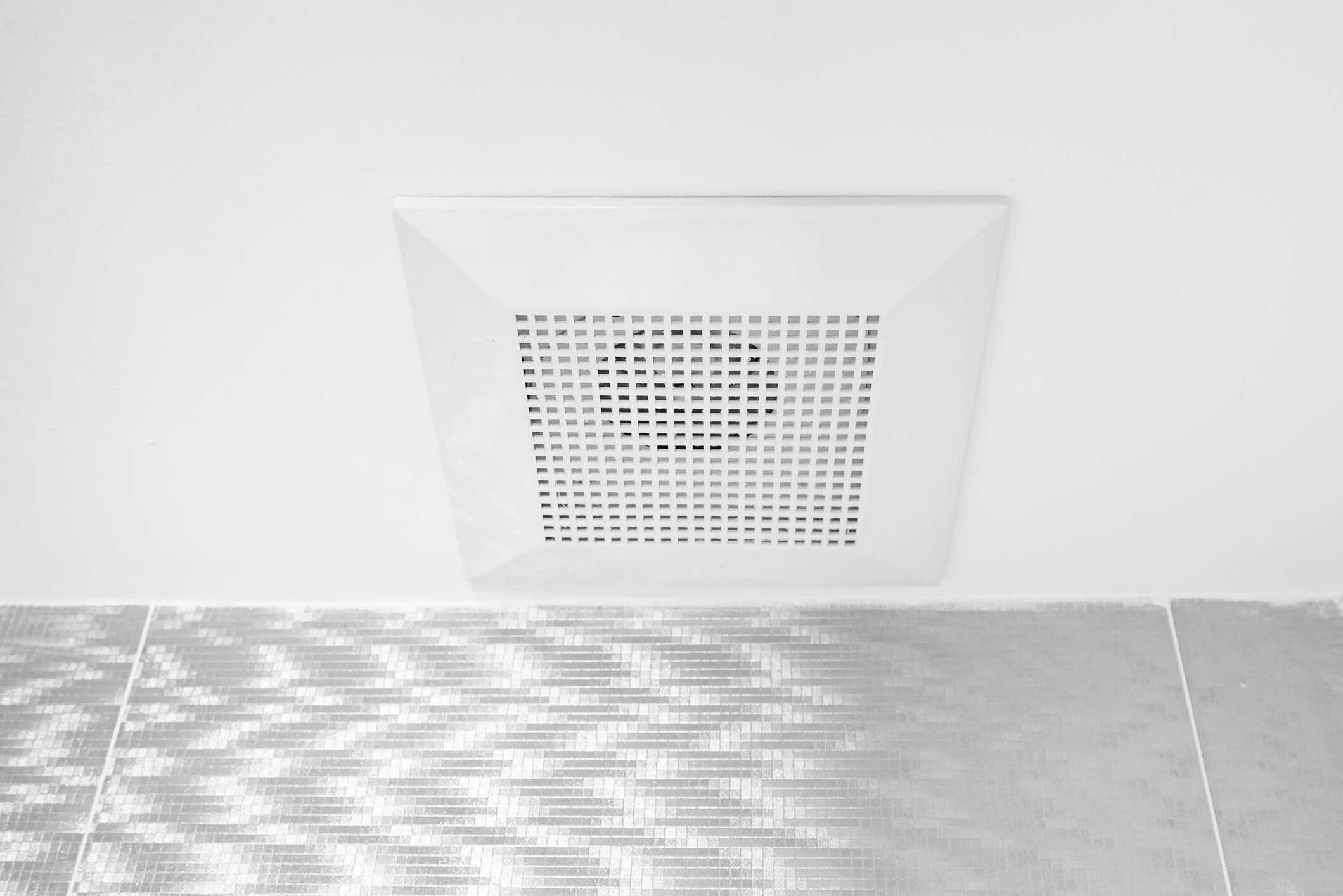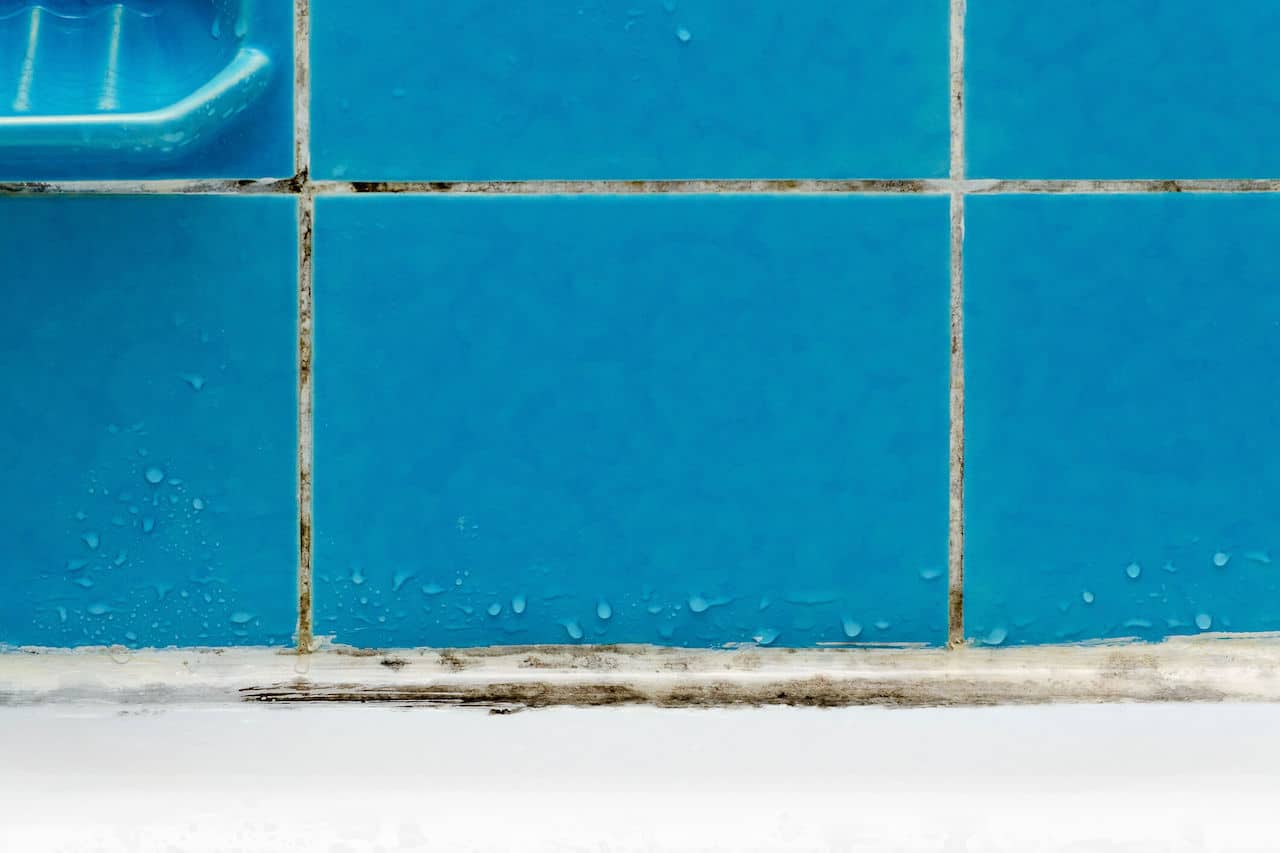Bathrooms are the tiny vacation locations in our own homes.
Hear me out!
You close the door to cut off the real world, take those glorious showers with billows of steamy greatness, and blast some of your favorite music. Maybe you even pamper yourself with a soak in the tub featuring a bath bomb and a glass of wine.
See! Quasi-vacations even if only for 30 minutes.
While these rooms offer us a short break from reality or a quiet location to ponder life, they, unfortunately, have one teeny tiny drawback. They’re constantly filled with moisture. From those steamy showers to the running sink faucet, bathrooms are constantly bombarded with water droplets.
This means you’re not the only one that loves these rooms… mold does too!
It can thrive in that moist, humid environment and eat pretty much anything that’s available in there.¹ The good news though? There are ways to prevent all of that moisture from building up and discouraging mold growth. That way, our little rooms of solitude can continue being our safe havens filled with clean, fresh air.
What is this preventative step? It’s simple! We just need to focus on our bathroom airflow.

CREATING BETTER BATHROOM AIRFLOW
Let’s be honest. Most of us enjoy closing that door and creating a sauna-like environment. It’s super tempting!
Just look at the number of television shows and movies that portray that exact scene, down to the ultra foggy mirror and steam pouring out of the shower.
The issue is that no one in these scenes focuses on creating airflow in those bathrooms. They just allow all of the moisture to build up in the room.
To avoid this, step number one is to turn that exhaust fan on! If you have one, that is. Most houses nowadays do, but current building codes do not require it if there’s a window available to open. Not the best way to handle moisture, but that’s a different discussion! Regardless, it’s a good idea to check your municipality codes to see what they require.
Turning on those exhaust fans pulls out moisture from the air and pushes it away from the room. A key tip here is to run that thing often- during every shower and at least 15-30 minutes after. That helps clear the air as much as possible.
The next step is to crack a door or open a window if you can. Sometimes privacy won’t allow this but follow this as much as possible. The exhaust fan works its magic by sucking out the humid air; cracking a door allows dry outside air to come in and replace the air that’s lost to the vent. Essentially, it creates better bathroom airflow by helping the fan pull out the moist air and replacing it with the dry air needed to discourage mold growth.
For those that don’t have a fan, crack a door or window to release all of that humid air. Again, it’s not foolproof but it will help decrease the moisture level inside. If it’s feasible to install an exhaust fan, though, that’s definitely the route you want to take!
If you take these steps and it continues to stay humid in a bathroom, consider throwing a dehumidifier in there. These little machines will work to take out any remaining moisture from the air.
BATHROOM EXHAUST FANS
For those with exhaust fans or looking to install one, make sure you take a solid look at what’s already there or what you’re purchasing.
The biggest qualification is to make sure it’s the right fan for the size of the bathroom; so whip out that measuring tape and get to measuring! The rule of thumb here is that you’ll need a fan that operates at one cubic feet per minute (CFM) for every square foot of your bathroom. If the bathroom area is too large, the fan won’t be able to properly ventilate the space, which leaves behind excess moisture.
The second aspect to look at is its location. Most of the moisture comes from the shower, so the fan should be placed near this steamy water source. When it’s too far away, that moisture has an opportunity to collect and pool in areas like the walls or shower grout.

Make sure to keep these little powerhouses clean as well! Dirt can collect on the vent which means it can’t exhaust properly and will leave moist air behind. A mucky fan can also lead to water collecting around the dirt in the vent and lead to mold growth inside.
Next, figure out where the duct leads to. If the exhaust fan is pushing all of that moist, hot air into your attic… that’s a problem! When it hits that cooler air, it will condense and create another great environment for mold to grow in. Plus, think of all the yummy things mold spores can eat up there. Not really the bathroom airflow fix we’re looking for. Instead, the duct should lead to the outside of your home, preferably on the side as a roof location may lead to leaks.²
WHY BATHROOM AIRFLOW MATTERS
Homes nowadays are built tighter and with more insulation. That’s great for electricity costs! Not so great when it comes to letting out excess moisture.
When bathroom airflow isn’t created, all of that moisture collects on every available surface. From the ceiling to walls and cracks in the grout, these droplets pool and eventually condense allowing for mold to slide right in.
Keep in mind, mold spores are everywhere.³ Even in our homes. They’re not a problem, though, unless they find the right conditions to live in. Since they eat almost anything, survive in temperatures between 40-90 degrees Fahrenheit, and can find oxygen in most locations, the only other thing they really need is moisture.⁴
If a spore comes in contact with a moist area, it’ll settle in and begin to colonize. And, all it takes is 24-48 hours to grow. That’s lightning speed!

Once they start growing, they release even more spores into the area which decreases indoor air quality and increases the chances that they’ll find another wet environment in a home. Add in the microscopic toxins they can produce, called mycotoxins, and a slew of adverse health reactions can begin to occur for those being exposed to these fungi.⁵’⁶’⁷
While society in general normally equates mold presence to a huge flooding event or a pipe leak in the attic, that’s not always the case. All it takes is a little bit of moisture, like condensation in a bathroom, and a lucky mold spore. Then boom, a mold begins.
MAINTAINING YOUR HAPPY SPACE
These steps may seem like a pain at first, but they can quickly become part of your normal routine. Walk in, turn the fan on, crack a window. Check, check, check! Keep in mind, mold growth can happen to anyone, at any time, and in any home. Even brand new homes can have mold growth! That’s why bathroom airflow is so important.
Actively decreasing the potential areas for mold growth can help ensure these little fungi don’t get the opportunities to grow in our homes. No mold means much better indoor air quality, and a safe and healthy environment for those living inside. Not to mention the money you’ll save from remediation costs, which can quickly rise to tens of thousands of dollars (if done properly).
Continuing to raise awareness for mold will go a long way towards helping create better home environments for us all. So make sure to tell your friends and loved ones to check out their bathroom as well and adjust their routines! Everyone deserves to live in a healthy home environment.
- Centers for Disease Control and Prevention. (2020, August 11). Basic facts about mold and dampness. Centers for Disease Control and Prevention. Retrieved September 9, 2021, from https://www.cdc.gov/mold/faqs.htm.
- International Code Council. (2017). Chapter 15: Exhaust Systems. In 2018 IRC: International residential code. essay, International Code Council.
- Environmental Protection Agency. (n.d.). Mold. EPA. Retrieved September 9, 2021, from https://www.epa.gov/mold.
- Lstiburek, J., Brennan, T., & Yost, N. (2002, January 15). Rr-0208: What you need to know about mold. Building Science Corporation. Retrieved September 9, 2021, from https://www.buildingscience.com/documents/reports/rr-0208-what-you-need-to-know-about-mold/view.
- Environmental and Occupational Health Assessment Program, & Environmental and Occupational Health Assessment Program, & Health Science Section, Mold Basics for Primary Care Clinicians (2009). Hartford, CT; Connecticut Department of Public Health. , H. S. S., Mold Basics for Primary Care Clinicians 1–10 (2009). Hartford, CT; Connecticut Department of Public Health.
- Weinhold B. (2007). A spreading concern: inhalational health effects of mold. Environmental health perspectives, 115(6), A300–A305. https://doi.org/10.1289/ehp.115-a300
- WHO. (2018, May 9). Mycotoxins. World Health Organization. Retrieved September 9, 2021, from https://www.who.int/news-room/fact-sheets/detail/mycotoxins.
Still Have Questions?
A member of our team is here to help! Click on “Get Started ➤” below to book a consultation with a member of the HOMECLEANSE team. We have a few quick questions that will help us put together a roadmap to solve or prevent all of your mold problems.
Two minutes of your time could lead to better health for you and your family.
Must-Have Indoor Air Quality Tools
-

EC3 Laundry Additive
Add EC3 to every rinse cycle to rinse away mold, bacteria and musty odors from...
-
$23.00 SHOP NOW -
Sale

Intellipure Compact Air Purifier
Buy one Compact, get one free. Simply add one to your cart, and a second...
-
Original price was: $299.00.$199.00Current price is: $199.00. SHOP NOW -

Intellipure SuperV Whole House Air Purifier
Turn your HVAC into a filtration system, removing 99% of ultrafine particles including airborne mold,...
-
$2,000.00 – $2,995.00 SHOP NOW -

HomeCleanse Cleaning
Take your cleaning to the next level buying all the tools we use to keep...
-
$299.00 – $549.00 SHOP NOW -

Mold & Bacteria Contents Cleaning
Remove harmful pollutants that accumulate in the dust of your home. (Options available for renters...
-
$99.00 – $349.00 SHOP NOW -

EC3 Mold Solution Concentrate
Micro Balance EC3 Mold Solution Concentrate is a natural botanical that removes mold spores, bacteria,...
-
$33.00 SHOP NOW -
Sale

Industry-Leading Intellipure Ultrafine 468
The Intellipure® Ultrafine 468 features our proprietary DFS technology, which traps and eliminates potentially harmful...
-
Original price was: $999.00.$499.00Current price is: $499.00. SHOP NOW -

The Dust Test
The Dust Test is a comprehensive at-home test that helps you identify mold and toxins...
-
$274.00 SHOP NOW -
Sale

EuroClean 4 Gallon Hepa Vacuum
The Euroclean GD930HSP is a 4 Gallon Dry HEPA Vacuum that meets the EPA's standards...
-
Original price was: $849.00.$619.00Current price is: $619.00. SHOP NOW -

AprilAire E080 Professional Dehumidifier Bundle
Includes all the dehumidifier accessories you will need. Our Aprilaire E080 comes with a drain...
-
$1,499.99 SHOP NOW
